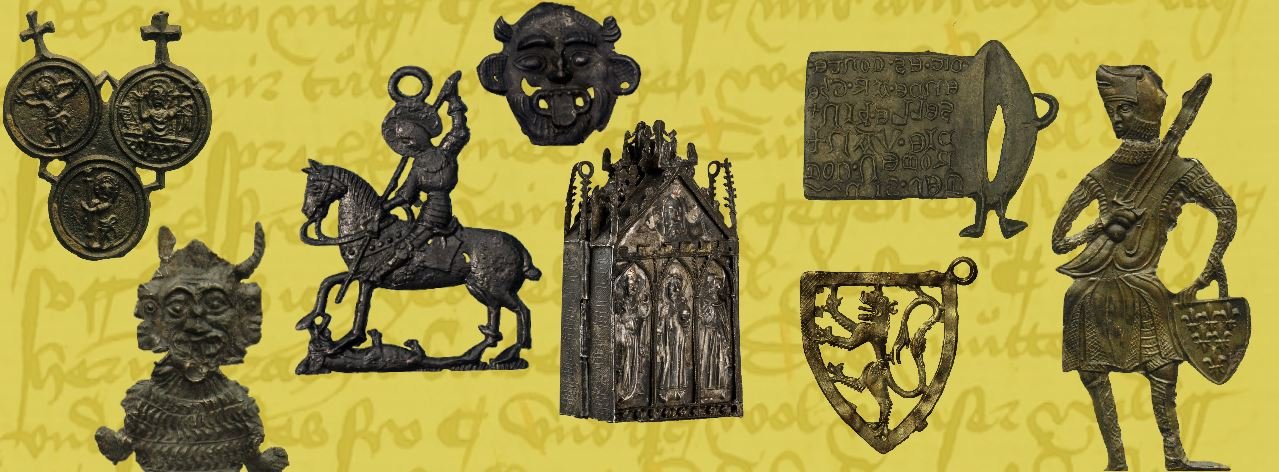
Medieval Badges
Our Focus
Medieval badges are small, brooch-like objects featuring an image or symbol that was widely familiar in the High and late Middle Ages (ca. 1150-1500 C.E.). Largely mass-produced from tin-lead alloys, over 20,000 medieval badges have survived into our times.
Medieval people wore specific badges to create and claim social, political, and religious relationships. Whether religious or profane, self-chosen or compelled, medieval badges were understood to signal community belonging. Studying medieval badges provides rich and nuanced historical depth to contemporary debates around affiliative visual signs and symbols (head scarfs, crosses, beards), supporting reflection on the historical use of visual markers of identity to unite, divide, and define communities.
Our Purpose
The aim of this website is to share knowledge about medieval badges and the tools scholars use for studying them. To achieve this aim, this website:
Makes available research produced by students that follows principles of sound scholarship and has been reviewed by scholars.
Makes available recently published work on badges by the new and established scholars in open-access format.
Regularly shares blog posts highlighting intriguing information about medieval badges that have been written or made by team members and other scholars.
Updates information about the Insight Grant team members’ scholarly activities on medieval badges, including forthcoming publications and upcoming presentations and exhibitions.
This project is supported by an Insight Grant from the Social Science and Humanities Research Council of Canada that runs from 2017 to 2022.
Funded by SSHRC Insight Grant no. 435-2017-0295
Banner photo images courtesy of The Van Beuningen Family Collection, Langbroek, the Netherlands.
Script courtesy of The Universitätbibliothek Heidelberg, Germany.
